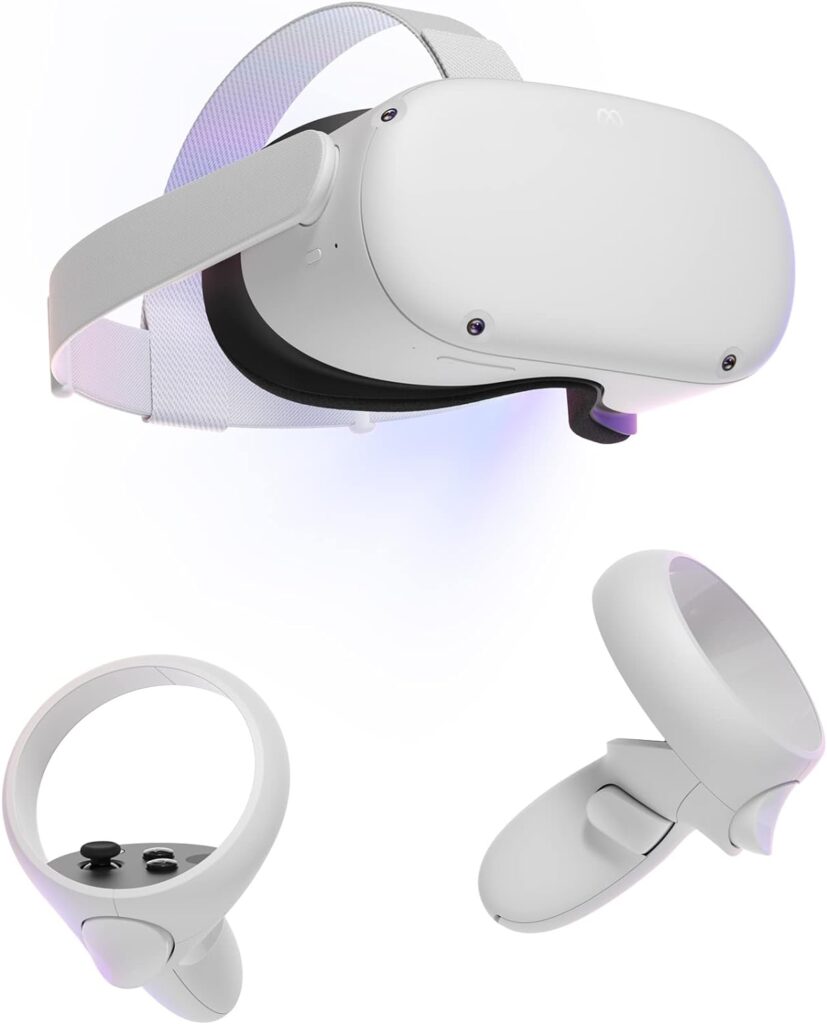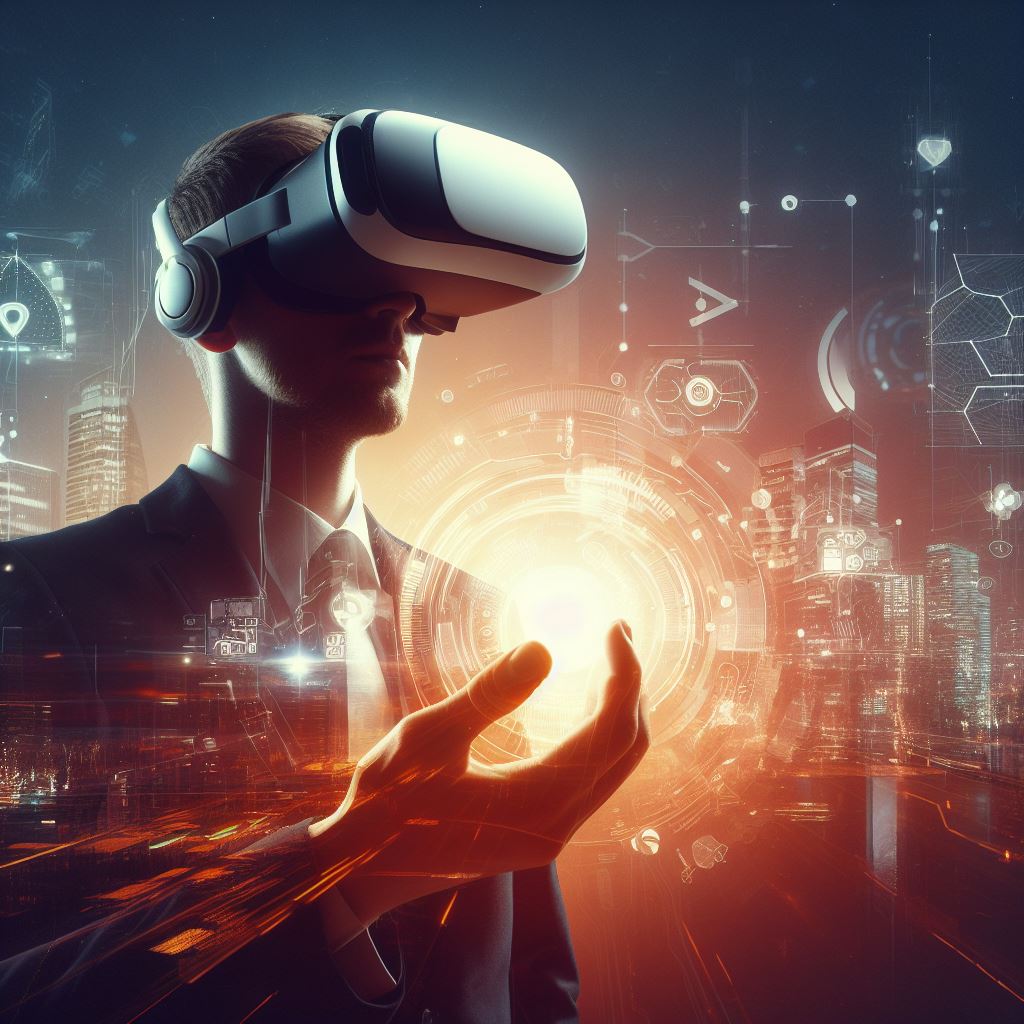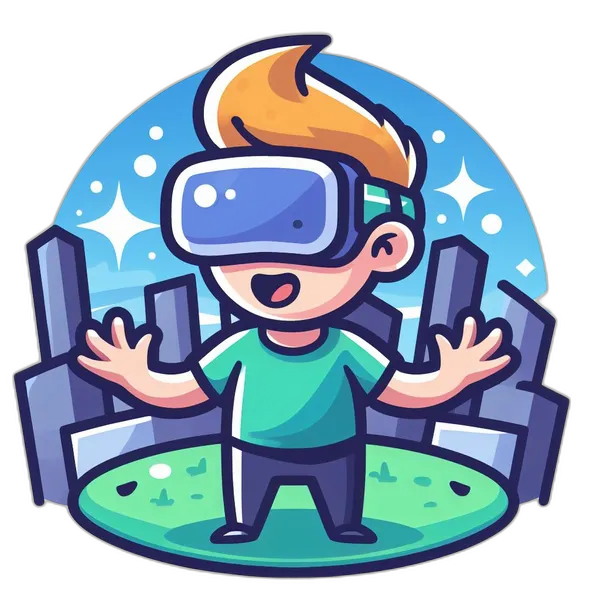Virtual reality, or VR, is a cool technology that makes pretend worlds feel real and lets you interact with them. VR headsets are devices that you wear on your head to experience VR content, such as games, movies, education, and more. VR headsets can be standalone, meaning they have all the necessary hardware and software built-in, or tethered, meaning they need to be connected to a PC, console, or smartphone.
VR headsets have been growing in popularity and innovation in recent years, thanks to the advancements in graphics, processing, display, audio, and motion tracking technologies. Meta (formerly Facebook) has been the market leader with its Quest series of standalone headsets, but other competitors such as Sony, Apple, Pico, and HTC are also offering or developing their own VR products.
In this article, we will explore some of the latest trends and predictions for VR headsets in 2024 and beyond, as well as the benefits and drawbacks of using them.
Key Takeways:
| VR Headset Trends | Benefits | Drawbacks |
|---|---|---|
| – More powerful and user-friendly standalone headsets with mixed reality capabilities. | – No need for external devices or wires. – More freedom of movement and portability. – Access to exclusive content and metaverse platforms. | – Higher cost than tethered headsets. – Limited battery life and storage capacity. – Potential privacy and security issues. |
| – New entrants and innovations in the tethered headset market, especially from Apple and Sony. | – Higher graphical quality and performance than standalone headsets. – Access to PC or console-specific VR games and apps. – Lower cost than standalone headsets (excluding the PC or console). | – Need for external devices or wires. – Less freedom of movement and portability. – Compatibility and setup issues. |
| – Increased integration of AI and voice assistants in VR headsets and glasses. | – Enhanced interactivity and personalization of VR experiences. – Easier navigation and control of VR content. – Additional features such as object recognition, translation, and generation. | – Reliance on internet connection and cloud services. – Potential for errors or glitches in AI responses. – Ethical and social implications of AI agents. |
Key innovations in VR technology
Virtual reality (VR) technology is constantly evolving, with new innovations being developed all the time. These innovations are helping to make VR headsets more immersive, realistic, and comfortable to use. Here are some of the key innovations in VR technology that are expected to have a major impact in 2024 and beyond:
- High-resolution displays: VR headsets are now equipped with higher-resolution displays than ever before, providing users with a more crisp and clear image. This is important for creating a more immersive VR experience, as it allows users to see more detail in the virtual environment. For example, the Valve Index has a resolution of 1440×1600 per eye, while the HTC Vive Pro 2 has a resolution of 2448×2448 per eye.
- Eye tracking: Eye tracking is a technology that allows VR headsets to track the movement of the user’s eyes. This information can then be used to improve the VR experience in a number of ways. For example, eye tracking can be used to focus the rendering of the virtual environment on the area that the user is looking at, which can improve performance and reduce motion sickness. It can also be used to interact with objects in the virtual environment by simply looking at them.
- Foveated rendering: Foveated rendering is a technique that reduces the amount of processing power required to render a VR scene. This is done by focusing the rendering of the virtual environment on the area that the user is looking at, and reducing the detail in the peripheral vision. This can help to improve performance and reduce motion sickness.
- Haptic feedback: Haptic feedback is a technology that allows VR controllers to provide users with tactile feedback. This can be used to create a more immersive VR experience by providing users with the feeling of touching objects in the virtual environment. For example, haptic feedback can be used to simulate the feeling of brushing your hand against an object, or the feeling of stepping on a different type of surface.
- Wireless connectivity: Wireless VR headsets are becoming increasingly popular, as they offer a more convenient and immersive VR experience. Wireless headsets eliminate the need for cables, which can be a tripping hazard and can restrict the user’s movement. Wireless headsets also allow users to move around freely in a larger space, which can make the VR experience more realistic.
- Inside-out tracking: Inside-out tracking is a technology that allows VR headsets to track the user’s movement without the need for external sensors. This makes VR headsets easier to set up and use, and it also allows users to move around freely in a larger space without worrying about bumping into furniture or other obstacles.
These are just a few of the key innovations in VR technology that are expected to have a major impact in 2024 and beyond. These innovations are helping to make VR headsets more immersive, realistic, and comfortable to use, and they are paving the way for a future where VR is used for a wide variety of purposes, including gaming, entertainment, education, and training.
Standalone VR Headsets: The Quest for Dominance
Amazon Affiliate Disclaimer:
This website is a participant in the Amazon Services LLC Associates Program, an affiliate advertising program designed to provide a means for sites to earn advertising fees by advertising and linking to Amazon.com. As an Amazon Associate, we earn from qualifying purchases. We get commissions for purchases made through links in this website. Amazon and the Amazon logo are trademarks of Amazon.com, Inc., or its affiliates.

Standalone VR headsets are devices that have everything you need to enjoy VR content without relying on any external devices or wires. They have their own processors, batteries, storage, sensors, cameras, speakers, microphones, and controllers.
The most popular standalone VR headset is the Meta Quest 2 , which was launched in 2020 and has sold over 10 million units as of October 2021 . The Quest 2 offers a high-resolution display (1832 x 1920 pixels per eye), a fast refresh rate (up to 120 Hz), a wide field of view (90 degrees), a powerful processor (Qualcomm Snapdragon XR2), a large storage capacity (up to 256 GB), and a long battery life (up to 3 hours). It also supports hand tracking, which allows you to use your hands instead of controllers to interact with VR content.
The Quest 2 can also be used as a tethered headset with the Link Cable , which lets you connect it to a PC and access PC-specific VR games such as Half-Life: Alyx. Additionally, the Quest 2 can stream VR content wirelessly from a PC with the Air Link feature.
Meta has also announced the Quest 3, which launched in October 2023. The Quest 3 has improved graphics, audio, comfort, and mixed reality capabilities. Mixed reality is a technology that combines VR and AR (augmented reality), which overlays digital information onto the real world. The Quest 3 has 3 cameras on the front that can capture your surroundings and blend them with VR content. This will allow you to see your own hands and body in VR, as well as interact with real objects or people.
The Quest series has been successful because of its affordability, accessibility, and exclusivity. The Quest 2 costs $249 for the 128 GB version and $299 for the 256 GB version, which is much cheaper than most tethered headsets that require a PC or console. The Quest 2 is also easy to set up and use, as it does not need any external sensors or wires. Moreover, the Quest 2 has access to exclusive content and metaverse platforms from Meta , such as Horizon , Venues , Workrooms , and Facebook Reality Labs. These platforms allow you to socialize, work, learn, play, create, and explore in virtual worlds with other people.
However, standalone VR headsets also have some drawbacks that may limit their appeal or adoption. One of the main drawbacks is the graphics for games on standalone headsets aren’t as good as their tethered counterparts. Another drawback is the limited battery life and storage capacity, which may restrict the duration and variety of VR experiences. A third drawback is the potential privacy and security issues, as Meta collects and processes a lot of personal data from its users, such as their location, voice, face, eye movements, and biometrics. Some users may not trust Meta with their data or may prefer to have more control over their data.
One of the most anticipated products of 2024 was the Apple Vision Pro, launched in February 2024. The Vision Pro is a mixed reality headset that will combine VR and AR features. It will have a high-resolution display (23 megapixels or roughly 4k resolution per eye), a refresh rate up to 100 Hz, a field of view of 110 degrees, and features a dual-chip design processor Apple M1 and Apple R2, which is used for real-time sensor input processing. It will also support hand tracking, face tracking, eye tracking, and voice control.
It will also come with two controllers that have haptic feedback, touchpads, and buttons. The Vision Pro costs around $4,000.

Tethered VR Headsets: The New Challengers
Tethered VR headsets are devices that need to be connected to a PC, console, or smartphone to enjoy VR content. They rely on the external device’s processor, battery, storage, and sensors, while they provide the display, audio, and motion tracking.
The most popular tethered VR headset is the Valve Index , which was launched in 2019 and has sold over 2 million units as of October 2021. The Index offers a high-resolution display (1440 x 1600 pixels per eye), a fast refresh rate (up to 144 Hz), a wide field of view (130 degrees), and the SteamVR Lighthouse tracking system.
The Index can be connected to a PC with a display port and a USB cable and two or more base stations that track your position and orientation . It also comes with two controllers that have haptic feedback, pressure sensors, and touchpads. The Index costs $999 for the full kit, which includes the headset, the controllers, and the base stations .
However, the tethered VR headset market is expected to see some new entrants and innovations in 2023 and beyond.
One of the most anticipated launches was the Sony PlayStation VR2 , which launched in Feb 2023 . The PSVR2 is a VR headset that works with the PlayStation 5 console. It has a high-resolution display (2000 x 2040 pixels per eye), a fast refresh rate (120 Hz), a wide field of view (110 degrees). It also supports eye tracking for foveated rendering, finger touch detection similar to Valve’s Touch controllers, and 3D audio.
The PSVR2 will be connected to the PS5 with a single USB-C cable . It will also come with two controllers that have haptic feedback, adaptive triggers, touchpads, and buttons. The PSVR2 will cost around $550 .
Tethered VR headsets have some advantages over standalone VR headsets that may attract some consumers. One of the advantages is the higher graphical quality and performance than standalone headsets, as they can leverage the power of the PC or console. Another advantage is the access to PC or console-specific VR games and apps that may not be available on standalone headsets. A third advantage is the lower cost than standalone headsets (excluding the PC or console), which may make them more affordable for some consumers.
However, tethered VR headsets also have some disadvantages that may deter some consumers. One of the disadvantages is the need for external devices or wires that may limit the freedom of movement and portability of the user. Another disadvantage is the compatibility and setup issues that may arise from connecting different devices or software. A third disadvantage is the lower availability and innovation than standalone headsets, as there are fewer options and updates in the market.
Click here for the best VR Headsets for Sim Racing
AI and Voice Assistants: The Next Frontier

AI and voice assistants are increasingly being integrated into VR headsets and glasses to enhance the interactivity and personalization of VR experiences. Some of the benefits of using AI and voice assistants in VR are:
- Easier navigation and control of VR content. You can use voice commands or gestures to launch apps, switch settings, adjust volume, pause, resume, or exit VR. You can also ask questions or request information from the AI or voice assistant without leaving VR. For example, you can ask Meta’s AI assistant to search the web, play music, set reminders, or chat with you .
- Enhanced interactivity and personalization of VR experiences. You can use AI and voice assistants to create or customize your own VR content, such as avatars, environments, objects, or stickers. You can also use AI and voice assistants to interact with other users or characters in VR, such as friends, celebrities, or AI agents. For example, you can use Meta’s Emu tool to generate images or stickers from text prompts.
- Additional features such as object recognition, translation, and generation. You can use AI and voice assistants to recognize objects or people in your surroundings and overlay relevant information or actions on them. You can also use AI and voice assistants to translate text or speech from different languages or generate new content from existing ones. For example, you can use Meta’s Ray-Ban smart glasses to identify landmarks, scan QR codes, or translate signs.
Click Here for the Best VR headsets for Flight Sim
However, AI and voice assistants also have some drawbacks that may limit their usability or appeal in VR. Some of the drawbacks are:
- Reliance on internet connection and cloud services. You may need a stable and fast internet connection to access some of the features or functions of AI and voice assistants in VR. You may also need to rely on cloud services that store or process your data, which may raise privacy or security concerns. For example, you may need to upload your photos or videos to Meta’s servers to use Emu or Meta AI.
- Potential for errors or glitches in AI responses. You may encounter situations where the AI or voice assistant does not understand your command or query, gives a wrong or irrelevant answer, misinterprets your intention, or fails to execute your request. You may also experience technical issues such as latency, lag, or crashes that affect the performance or quality of the AI or voice assistant. For example, you may find that Meta’s AI assistant does not recognize your accent, dialect, slang, or context.
- Ethical and social implications of AI agents. You may face ethical or social dilemmas when interacting with AI agents in VR, such as whether they have rights, feelings, or responsibilities; whether they can deceive, manipulate, or harm you; whether they can replace human relationships; whether they can influence your behavior or beliefs; and whether they can be held accountable for their actions. For example, you may wonder if Meta’s celebrity chatbots are authentic, respectful, or trustworthy.
Conclusion
VR headsets are devices that create immersive and interactive simulations of real or imagined environments. They can be standalone or tethered, depending on whether they need external devices or wires. They can also integrate AI and voice assistants to enhance the interactivity and personalization of VR experiences.
VR headsets have many benefits, such as providing entertainment, education, communication, and creativity. They can also offer access to exclusive content and metaverse platforms, such as those from Meta. However, VR headsets also have some drawbacks, such as high cost, limited battery life, privacy and security issues, compatibility and setup issues, errors or glitches in AI responses, and ethical and social implications of AI agents.
VR headsets are expected to grow in popularity and innovation in 2024 and beyond, as more competitors and products enter the market, such as Apple Vision Pro and Sony PlayStation VR2. VR headsets are also expected to improve in graphics, performance, comfort, and mixed reality capabilities.
VR headsets are a fascinating and promising technology that can transform the way we experience reality. However, they also pose some challenges and risks that need to be addressed and balanced. As consumers, we need to be aware of the pros and cons of VR headsets and make informed decisions about using them. As creators, we need to be responsible and ethical in designing and developing VR content and platforms. As humans, we need to be mindful and respectful of ourselves and others in VR.
Check out our Picks for the Best VR headsets for Sim Racing
Subscribe now for hand-picked best experiences, product discounts, and the latest VR trends, tips and tricks, straight to your inbox.



Leave a Reply